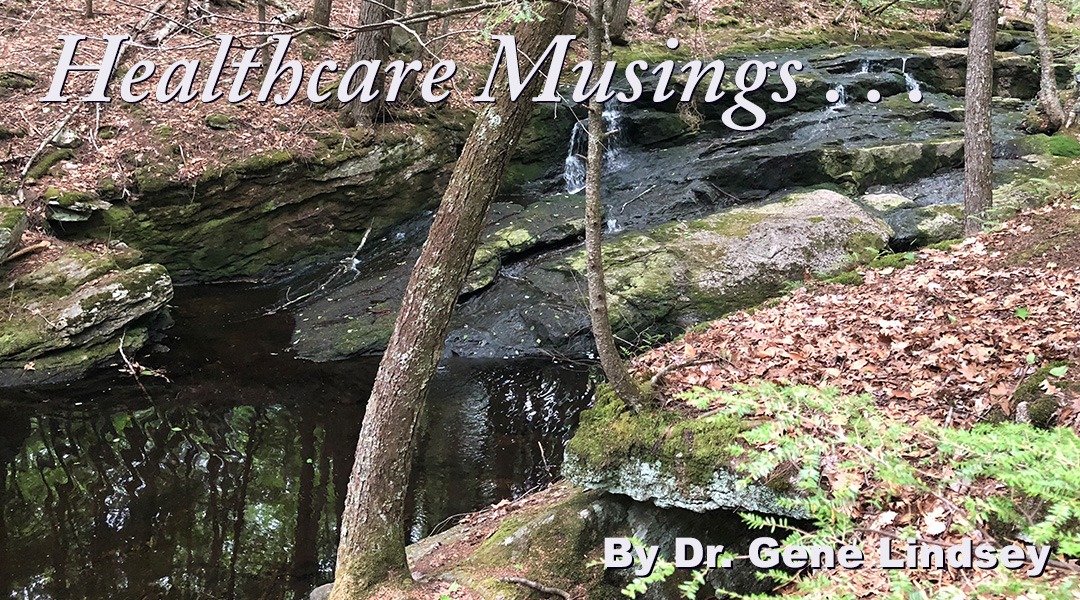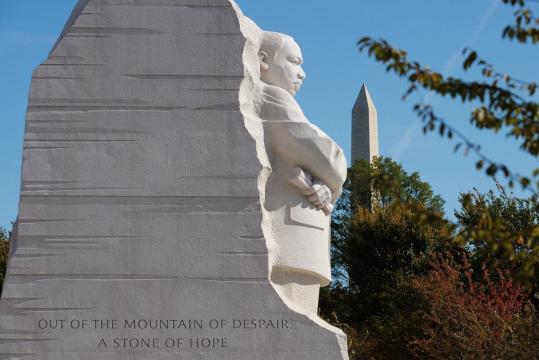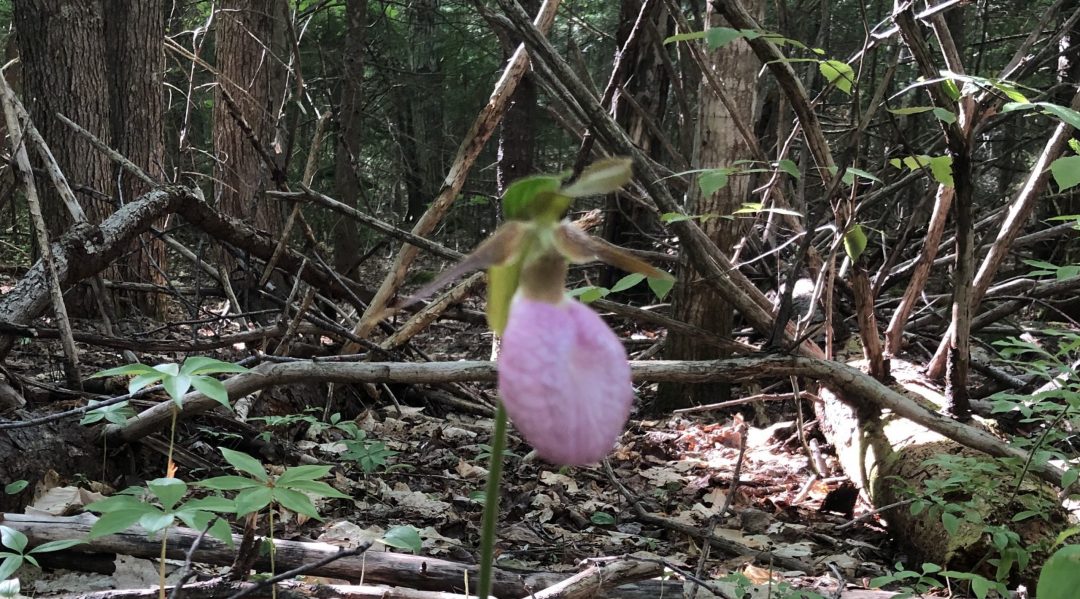June 12, 2020
Dear Interested Readers,
Hope For Transformational Change
Interesting and surprising things happen in cyberspace. I send these letters to you through a platform called WordPress. I get responses from you in two ways. Some of you just email me directly. Some of you use the comment box at the end of the note. Either way is fine with me. I just love to hear from you.
If you comment in the box at the end of the letter, WordPress sends me an email to tell me that there is a comment. Some comments come from sources that are obviously “bots” or some other form of mischief. I have no idea how those responses occur. I have seen enough of them to realize that some are from Eastern Europe, the far East, and Africa. If I think the comment is from a real reader, I always post it. I am yet to get an inappropriate comment from a person that I thought had read the post. It has been a few months since I got a comment that looked “fishy.” Those “bot” comments seem to some in waves.
I love comments. They trigger the release of a lot of dopamine for me. Three days ago I got an email notifying me of a comment. What was strange was that the comment was associated with a post I wrote on January 7, 2016 entitled “Optimism or Hope?” I did not really remember the post until I looked it up. I reassured myself that my lack of memory was not a concern since I have put out more than 1000 notes in the last 12 years, and over 450 since the note to which the comment was attached, and it would be hard to remember every one of them in detail. Here is what it said:
Thank you, I have recently been searching for info about this subject for ages and yours is the best I have discovered till now. But, what about the bottom line? Are you sure about the source?
The sentence seemed a little strange and internally inconsistent: “I have recently been searching for info about this subject for ages.” Recently and for ages is a strange combination. There was a gmail address with the comment, so I posted it although I thought it a little strange. I also wrote a note to the gmail address. When gmail returned my note saying that no such address existed, I took down the comment. The next day I got a more obviously ridiculous comment on the same post confirming that what I was seeing was “spam,” but these faux comments have actually been a gift. The piece from four years ago had something to say to me in these times.
The picture with the post was one that I had taken on a trip to Washington of the statue of Dr, Martin Luther King, Jr. that is the centerpiece of his memorial on the Washington Mall. As you can see in the picture below from the post, the inscription on its base reads, “Out of a mountain of despair, a stone of hope.” The line comes from his “I Have a Dream” speech. The monument is massive, but the monument and its inscription have generated some disappointment for many of those who loved Dr. King because they did not think the monument captures his spirit. As an interesting aside, there was a second quote on the statue that was a poor paraphrase from another speech. Many people, including the poet Maya Angelou, thought the paraphrase distorted the meaning of the original statement. After a long process, those words were removed from the statue in 2013.
“Stone of hope” has its own interesting symbolism that may not be immediately obvious. The Hebrew name Ebenezer means “stone of hope.” Dr. King and his father were ministers at the Ebenezer Baptist Church in Atlanta. There may even be other hidden meanings. Ebony is a hard/strong, dark to blackish colored wood. There are many potential scriptures that Dr. King may have been referencing when he referenced “ a stone of hope. In 1 Samuel 7:12 we read:
“Then Samuel took a stone, and set it between Mizpeh and Shen, and called the name of it Ebenezer, saying, Hitherto hath the LORD helped us.”
Samuel created the monument as a reminder to the Hebrews that God had delivered Israel from its enemies. It was a symbol that through God they had hope. I would like to think that Dr.King was metaphorically acknowledging the despair that black people had endured in America for 350 years. The March on Washington that culminated in the speech that reminded them of the hope that someday they would enjoy equality and respect in America. The March on Washington and the speech did generate hope, and did contribute to the momentum that resulted in the passage of the Civil Rights Act in 1964 and the Voters Rights Act in 1965. The speech and the large crowd on the mall, plus a growing awareness through the pictures on the evening news of the police brutality associated with other demonstrations like the March to Selma and the confrontation on the Edmund Pettus Bridge created hope for the transformational changes that Dr. King demanded. Dr. King described the March on Washington in a metaphor where he described the demands of black Americans as an attempt to cash a check:
…the Negro is still languished in the corners of American society and finds himself in exile in his own land. And so we’ve come here today to dramatize a shameful condition. In a sense we’ve come to our nation’s capital to cash a check. When the architects of our republic wrote the magnificent words of the Constitution and the Declaration of Independence, they were signing a promissory note to which every American was to fall heir. This note was a promise that all men – yes, black men as well as white men – would be guaranteed the unalienable rights of life, liberty and the pursuit of happiness.
It is obvious today that America has defaulted on this promissory note insofar as her citizens of color are concerned. Instead of honoring this sacred obligation, America has given the Negro people a bad check, a check which has come back marked insufficient funds.
Dr. King was demanding that the nation make good on its promises and pay the debt that it owed to black Americans. As he was making demands from those in power, he was offering his black brothers and sisters who had been “languishing” so long the hope of the dream that he shared with them. It was a vision of equality and respect. It is still an unrealized dream.
In my 2016 piece “Optimism or Hope?” I was responding to a comment from a reader who had said that he did not share my optimism for the transformational possibilities of healthcare. I had reported that the recent IHI meeting in Orlando had given me hope that the slow progress that we were making in healthcare would eventually make a difference. My response to the comment was to explain that I was not optimistic, but I was hopeful. I was trying to explain what I had learned from a treasured colleague, Diane Gilworth was the difference between optimism and hope. In the post I quoted from my response to my skeptical reader:
..You read me wrong. I am not optimistic. I am hopeful. Optimism is about false certainty and frequently leads to huge doses of disappointment. It’s like being sure that the Patriots would beat the Giants a few years ago and then have them loose on a fluke catch.
I am hopeful…A hopeful person is looking for small indicators of possible progress. I think that there is a high likelihood of significant short-term disappointment in healthcare and even some possibility of a reversal of the little bit that has been accomplished.
My life’s experience as a kid growing up in a segregated and racist South encourages me. We are still racist, but we are not as segregated… Change has occurred, but not perfection. That gives me hope. I do not despair. At the end of the piece I tried to indicate with my comments about McGovern in ‘72 that a collection of healthcare enthusiasts in Orlando who can point to a few small successes does not mean the game has been won…
Further on in the post I added:
Hopeful people orient themselves to the future as they work in the moment. They live and work for their dreams and hopes as they continue to struggle with how to make the dreams come true. They live a life that is one big heuristic exercise. The spirit and reverence in the song, “We Shall Overcome” and the spirit and expectation in Dr. Martin Luther King’s famous “I Have A Dream” speech come to mind as embodiments…of hope. In the 1963 “I Have a Dream Speech” Dr. King taught us that we should realize that “Out of a Mountain of Despair, a Stone of Hope“ was possible….
Hope endures even in defeat or when it faces obstacles. The desired outcome may be a long shot or perhaps a theoretical impossibility, but the dream lives. Hope has patience and expects delays. Hope takes a long view. Dreams plus hope suggests an “audacity” that defies conventional thinking as the title of Barack Obama’s book, The Audacity of Hope, implies…
Perhaps on the list the biggest barrier to the Triple Aim is the emotional state of the professionals that provide care. “Burnout” is a popular topic but it is a symptom and not a disease. We need to fix the root cause issues. As a symptom, burnout requires deep reflection and deserves immediate action. Unless we fix the root causes of burnout, it has the potential to undermine much of what has been achieved.
That was four years ago. An optimist would have become cynical by now. A year later Donald Trump was inaugurated as our 45th president, and over the last three years we have watched many of the acheivements of the previous 20 years evaporate, or perhaps more accurately, wither under the continuous harassment from the Trump administration. There is a chance that the Supreme Court, now stacked with a conservative majority, will declare against all reason later this year that the ACA is “unconstitutional.” How would an optimist feel about the future of healthcare when all that we can think about in the moment is the threat to our democracy associated with a president who wants to impose more force to muffle the voices of dissent, and simultaneously leds the movement to totally abandon science and reason in a desperate move to restore a devastated economy? It is not a time for optimism, but it is a great time for hope.
There are abundant reasons to have hope for both healthcare and for the universal recognition that black lives matter. Our portion of hope rises with each demonstration of black and white, young and old marching together to demand an end to inequality and the brutalities that are necessary to sustain it. Every lie, stupid statement, or hostile and illegal action of the president that makes another independent voter, Republican senator, or conservative governor uncomfortable with the president’s increasingly authoritarian behavior is a cause for hope. Al Sharpton’s moving eulogy this week of George Floyd was an indictment of those of us who have been silent while many suffered, and is a reason to hope. There have been long standing problems in care delivery that have been magnified by COVID-19, and the increasing number of conversations about a better system of care in “the new normal” are a reason for hope.
Julie Rovner, one of my favorite healthcare journalists wrote a hopeful article about change in the wake of COVID-19 this week for the Kaiser News Service. The article is entitled “Rapid Changes To Health System Spurred By COVID Might Be Here To Stay.” In the article she quotes Gail Wilensky, the respected former administrator of CMS under Bush I.
“Health care is never going back to the way it was before…”
Not all of what Rovner discusses is considered to be positive, especially by those who cling to their advantages in the status quo. She predicts telehealth is here to stay. She sees that primary care remains on life support and it may remain endangered. She notes that the role of hospitals has been deemphasized in a way that may persist in the post COVID-19 world. Rural hospitals will suffer more if they continue to be dependent on payment for the services they can render rather than be supported and valued for the protections they provide. Ironically, hope lies in the reality that something will have to change:
One easy way to help keep primary care doctors afloat would be to pay them not according to what they do, but in a lump sum to keep patients healthy. This move from fee-for-service to what’s known as capitation or value-based care has unfolded gradually and was championed in the Affordable Care Act.
But some experts argue it needs to happen more quickly and they predict that the coronavirus pandemic could finally mark the beginning of the end for doctors who still charge for each service individually. Mostashari, who spends his time helping doctors make the transition, said in times like these, it would make more sense for primary care doctors to have “a steady monthly revenue stream, and [the doctor] can decide the best way to deliver that care. Unlimited texts, phone calls, video calls. The goal is to give you satisfactory outcomes and a great patient experience.”
I see real hope in that last quote. Finally, fee for service has demonstrated that it is an inadequate and wasteful way to provide for the health of the nation. In 1963 Dr. King told us that we needed to change the way we treated black Americans. In 1965 Dr. Robert Ebert told us that we needed to find a new operating system and finance mechanism for healthcare if we were to protect the health of the nation. Both men were right and now more than 50 years later we may be moving toward the moment when we begin to take the truth they offered seriously. What did Winston Churchill say?
“Americans will always do the right thing, only after they have tried everything else.”
That is harsh, and there is some debate about whether or not the quote is accurate, but if the shoe fits…
It requires hope to imagine support for primary care, preservation of our rural health system, and universal access to healthcare with a functional system of value based healthcare finance. Despite the voices and bodies in the street it still requires great hope to imagine the fulfilment of Dr. King’s dream. He was indeed a mountain of insight and no person in history has ever demonstrated more commitment to the cause of human rights and an equitable community. His words and life were and continue to be the “stone of hope” for billions of denied people on this planet. Likewise, the voices in the street since the death of George Floyd have awoken from their lethargy and remarkably many of the “advantaged” in our world have joined the oppressed in demanding transformational change.
I am not optimistic, but my hope is rekindled. I awake every morning with the fear that somehow the demands have been silenced and the pressure from the self interest of the status quo has quelled the movement for change. When I see elections managed like the one in Georgia this week it is hard to be optimistic, but when I see white and black voters in lines that go over the horizon, trying to stand six feet apart and wearing masks, as they wait patiently in the broiling Georgia sun to cast their votes, I have hope. When Twitter exposes the president’s lies, I have hope. When I see General Milley say he was wrong to participate in the president’s stupid photo op with a Bible, I have hope.
I often hear the phrase, “Hope needs a plan.” People with the same hopes are sustained by one another. People who share a vision and a hope for that vision come together to form the coalitions that are the foundation for effective action. It takes a long time for a critical mass of individuals to see the beauty in the vision of the Triple Aim. It will take much, much longer for everyone to understand that we must work together to live out the meaning of the essential truth that all are created equal. Some movements and moments are catalytic. Most of us who enjoyed the privileged state of being white have had a hard time grasping the deep truth and reality of the fact that Black Lives Matter. There is much hope in the realization that there is a growing number of citizens who understand that truth and want to make it an accepted reality. I have great hope that as we make progress in resolving the issues of racial inequality that improvement in the social determinants of health and the equitable access to quality care will be able to draft on the core objective of celebrating our common humanity and common entitlement to life, liberty, and the pursuit of happiness.
I hope that soon another “bot” will remind me of some other point that I should not forget.
Enjoying What Is: The Hike To Devil’s Half Acre
Hope needs nurturing and frequent reminders. Nothing diminishes hope like a constant exposure to loss and disappointment. Add fatigue to a loss of hope and we are on the brink of a potentially lethal situation. When hope is gone despair rushes in to fill hope’s empty chair.
Somehow I got to about the age of seventy without adding the word anhedonia to my vocabulary. Anhedonia is a word that should engender as much alarm as cancer or COVID-19. Anhedonia is at the heart of what we are calling “the diseases of despair.” The recent book by Nicholas Kristof and Sheryl WuDunn, Tightrope: Americans Reaching for Hope could have been alternatively titled Tightrope: Americans Struggling to Escape Anhedonia.
Just in case I am not the only person to have avoided learning the definition of something that through personal experience I can’t even imagine, here is the definition of anhedonia from the Merriam-Webster Dictionary:
anhedonia: a psychological condition characterized by inability to experience pleasure in normally pleasurable acts
I’ii risk carrying the analysis too far. If a person has sunk into a state of anhedonia, they have likely lost all expectations in their right to the pursuit of “life and liberty.” For many with anhedonia, existence has become an intolerable burden. Connections with other people are withering or non existent. In a world without happiness or pleasure, non existence becomes a plausible alternative.
When I was a younger guy and feeling down or stressed there was nothing that could clear my head like running for a couple of hours. I would head out with a head full of imagined troubles and two hours later I could not remember why I had been so out of sorts. These days I get the same benefit and vaccination against anything close to anhedonia by heading to a trailhead. One of my favorite local hikes is the Great Brook Trail.
The picture in today’s header is of the Lower Cascades on Great Brook. Great Brook flows into and out of a pond called The Devil’s Half Acre. I have done this trail in all four seasons. It is remarkably different each time I experience it. This last Sunday I was eager to share the delights of the trail with my son and daughter-in-law. I was particularly excited about showing them the “Upper Cascades” which are a wide steep slope of granite that runs for something like 50 yards into a series of pools. The Upper Cascade begins just as Great Brook flows out of the Devil’s Half Acre which is home to some very busy beavers.
If you click on the last link you will see water flowing over a beaver dam and also see what the Lower Cascades look like when the water is high. When we got to the trail I noticed that the brook was a trickle compared to its usual run. The lower cascades were not very impressive as the header shows. It was as if someone had turned off the water. There is another brook that flows into Great Brook above the lower cascades. If not for that brook, there would have been no water in the stream because when we got to the upper cascades they were dry. I was miffed. There had been some rain. There should have been some flow. The answer to the puzzle was at the top of the trail. The beavers had done such a great job of enhancing their dam that no water was flowing out of the pond and down the cascade. “Bummer,” I thought, but as I stood on the shore of the pond and examined their work I was impressed. They are first class engineers! The link does show a picture of water coming over their dam, but we will need a lot more rain before their “cup runneth over” again.
There were two unexpected pleasures on the descent down the trial. We saw a dying female Luna moth, the beautiful mouthless insect that can’t eat and dies after it mates. The last treat was a perfect pink “Lady Slipper.” As the picture reveals, the color was spectacular but the picture is a little fuzzy.
It’s been a long tough spring and there has been much to ponder about our distressed world in the two weeks since George Floyd was murdered. I hope that this weekend you might find some relief by finding something unexpected on a trail somewhere near you.
Be well! Wait a little longer before you go out to eat, or get a haircut. Stay home if you can. Wear your mask and practice social distancing as best you can if you must go out. Demand leadership that is empathetic, thoughtful, truthful, capable, and inclusive. Look for opportunities to be a good neighbor. Let me hear from you. I would love to know how you are experiencing these very unusual times!
Gene
PS: About the time I finished writing this post this morning, my son and wife noted that the two loons that share our lake with us were swimming together. Lady loon has been on the nest for several weeks. At this time of the year seeing the two loons together in June can mean only one of two things. The first and most unhappy possibility is that something has happened and we will not have the pleasure of seeing a baby loon grow up as the summer progresses. That has been the reality for the past three years. The second possibility is that their egg has hatched and we have a new baby loon. It took several minutes with binoculars to confirm that they had a baby with them, but they did! They then swam close to our dock and stayed for at least a half an hour so that my wife could get some great “family photos.” Baby pictures always generate hope!





